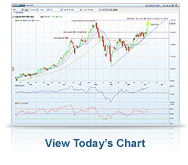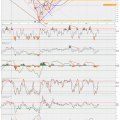Monday, April 13, 2015
The Japanese Yen has settled into a very narrow trading range after several periods of volatility over the past few years. The Japanese economy has vacillated between expansion and recession over the past several years. Japan’s GDP is growing again, although slowly, after the sharp recession in early 2014 induced by a sales tax increase in April 2014.
Fundamentals
In the 4th quarter of 2014, Japan’s economy grew at an annualized rate of 1.5{01de1f41f0433b1b992b12aafb3b1fe281a5c9ee7cd5232385403e933e277ce6}. This was revised down from the initial reading of 2.2{01de1f41f0433b1b992b12aafb3b1fe281a5c9ee7cd5232385403e933e277ce6}. The recent drop in Crude Oil prices should benefit Japan, as they are a net importer of Oil. Also, a second sales tax increase has been postponed until at least April 2017. Japanese interest rates have been at 0 since October 2010, and the Bank of Japan introduced a massive stimulus in an October 2014 announcement.
The Japanese Yen reacted quickly to the October news, dropping on October 31st from an open of .9154 to close at .8908. Since then, however, trading has been quite range bound, perhaps indicating indecision about the future health of Japan’s economy.
Technical Notes
Looking at the 3-month chart, we can see a fairly narrow trading range over the past 2 months. Support is seen around .8250, while resistance is around .8460. The 14-day RSI is at 47, indicating a short-term bullish trend after the reversal on March 10th.
Dale Jennings, Commodity Analyst
SOURCE: FuturesBlogs – Read entire story here.



